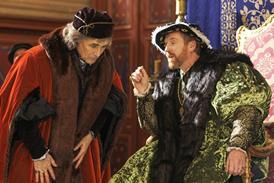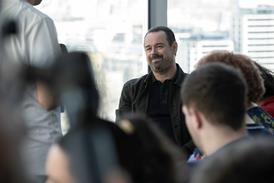As we clasp tightly to the lessons learned from Crowngate and stride into a gleaming new era of high definition, the time is ripe to revise the edit suite rule book.
Our pre-title teases have developed an eating disorder. They consume an ever-ballooning portion of programme content and are now obese. The titles themselves are being pushed so late into the programmes that we now often add a pre-title title.
We stuff our teases with both the entire premise and the highlights, which leaves a challenge for the post-title sequence: how do you begin the programme again without repetition?
Let's allow our teases to tease. They should be no more than a slap in the viewer's face to say shut up and watch me, I'm full of surprises. Remember, surprises only function if the juiciest moments are kept under wraps.
If there's anything more unwelcome than a tease without a three-act narrative structure, it's a jump cut. Why has this practice been outlawed in TV? It's a beautiful and honest device, and has long been acceptable in theatrically released documentaries.
I've often campaigned to "out" the jump cuts but as yet my attempts have been thwarted. Are we afraid of exposing the gross media conspiracy that all TV is a construct? It's time to set our jump cuts free - we'll let them stand proud as a symbol of TV's ethical enlightenment.
While enduring the war for jump-cut liberation, we must address another issue. Whoever coined the term "cutaway" should be banished to an eternity inside a Warhol film. You should never cut away from anything, you should only ever cut to something.
I'm frequently eye-poked by Band-Aiding cutaways, such as hand shots in interviews, or irrelevant nearby objects (trees are a favourite). These shots reek of contrivance and desperation. Unless the hands add meaning to the scene, or the tree is because someone is talking about... well, the tree, alternative solutions must be sought - and don't even get me started on the noddie. Cutaways should do so much more than mask a jump cut, they should enrich the scene.
Non-sync wides are another misused device, chiefly because they're rarely actually non-sync; they tend to just be a bit wider. A goldfishing speaker may appear passable in low resolution but on reaching the online it looks like the editor's had an avant garde moment.
This issue has become critical because not only is the average television now larger than an Avid monitor, but it sports glistening high definition.
We should presume that the viewer at home can now see more than us, therefore all non-sync wides must be shot with both the mouth and jaw of the speaker totally obstructed.
No doubt once HD has made itself more comfortable within the industry, it'll stamp its foot for bolder changes, but in the meantime can we please extinguish the practice of over-grading? Who needs the extra definition if all we do is crush the blacks, bleach the whites and inject the chroma with a hallucinogen? It's like having Teletubbies combust in your eye sockets.
We're blessed with astonishing camera and grading talent, but we may as well send them packing if we insist on this day-glow palette. It's time to employ a more sensitive approach to polishing our wares; I'm sure factual entertainment will survive without it.
Technology aside, post-production is not a profession which lends itself to revolution. It's hard to channel your punk rock spirit while tapping at a computer and fussing over fractions of a second. However, if we all chip away at the issues frame by frame, it's possible that no one will notice us taking a few progressive steps.
James Bicknell is a freelance off-line editor and writes the blog Tales from the Cutting Room Floor http://jamesbicknell.blogspot.com




























No comments yet